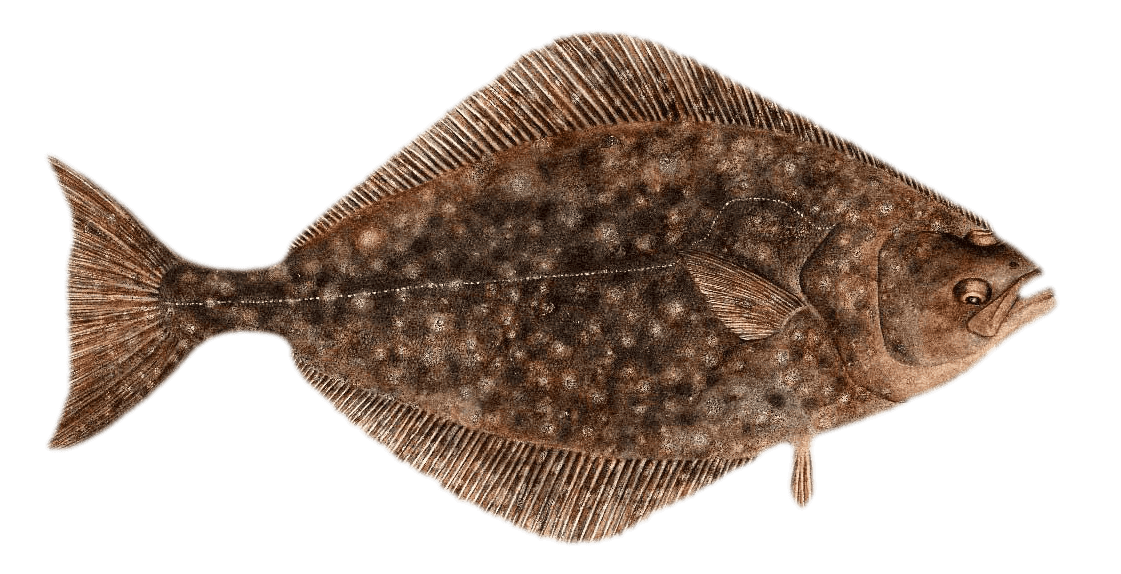Pacific Halibut

Species Details
Hippoglossus Stenolepis
Pleuronectidae
Pleuronectiformes
Continental Shelf, Offshore
20 - 500 lbs.
96"
Pacific Halibut (Hippoglossus stenolepis) Fish Description
The Pacific Halibut is one of the largest flatfish in the world (2nd biggest, next to its close relative, Atlantic Halibut). It’s a saltwater fish that thrives in deep cold waters. It has a muddy brown color and dark-brown spots. Its body is more elongated than most flatfishes and shaped like a diamond.
They’re strong swimmers and eat a variety of fishes from the bottom of the ocean - cods, turbots, pollocks, octopi, crabs, and shrimps. They also sometimes eat fishes from the pelagic - salmon, herring
Interesting Facts About the Pacific Halibut
- Pacific halibuts are called demersal fish, these are fish that stays in the bottom of the ocean, just like stingrays.
- Almost all halibuts are “right-eyed”, which means they are facing up with the “right side” of their face and the left side is the bottom.
Pacific Halibut Size
The Pacific halibut is a large fish that can grow up to 8 feet long and 5 feet wide and weigh up to 500 lbs. Their average weight is 20-40 lbs, but catching 100 is pretty common. As of now, there is no average length of the Pacific Halibut. They mature at the age of 8 for males and 12 years old for females.
Habitat & Distribution of the Pacific Halibut
The Pacific Halibut mainly lives in the deep waters of the northern Pacific region. They usually prefer depths 20-1000 feet, but they can go as deep as 3,600 feet. They prefer the cold temperatures of 37°-46°F and are mostly found on or near continental shelves.
In the U.S., their range is from California up to the Chukchi Sea. Good fishing spots are the Gulf of Alaska and the Bering Sea. You can also find Pacific halibuts in nearer areas such as the coasts of California, Oregon, and Washington.
Pacific halibuts migrate in a clockwise manner, from northwest to southeast. A good time to catch these fish is in summer, where they are more active in their feeding grounds and are closer to shallow waters. During winter, they go to deeper waters to spawn their eggs.
Fishing Techniques for the Pacific Halibut
Being bottom-dwellers, make sure you equip yourself with gears for deep fishing. Try to aim the sweet spot for fishing Pacific Halibut which is 150-500 feet. They like to stalk their prey from the bottom and being strong swimmers, it’s good to make a chase with your baits to tease the halibut. To send your baits to the bottom, use a 1-2 lb weight. Slightly cast your line forward to get the fly down and retrieve it fast every once in a while to check. Just leave the rod attached to the rod holder slightly bounce the rod up and down attracting the halibut. It’s a waiting game for this fish.
Fly fishing for Pacific halibuts is rare but it’s doable. For Fly Rods, use a 50-pound monoline with fast sinking heads and a 12-15 heavyweight rod with a 16-lb snippet. Recorded fly fishing for Pacific halibuts can go as heavy as 138 pounds. For spinner rods, use a 6-7 feet heavy rod with a 60-lb line and 1-1.25 lb lead.
Recommended baits are pink salmon heads and bellies, squids, herring, and octopus. To further catch the attention of the Pacific halibut, use some fishing attractants. For lures, use jigs or spoons that make some noise to attract them They’re known to use their sight and hearing in more shallow waters but in deeper waters, they hunt with scent.







